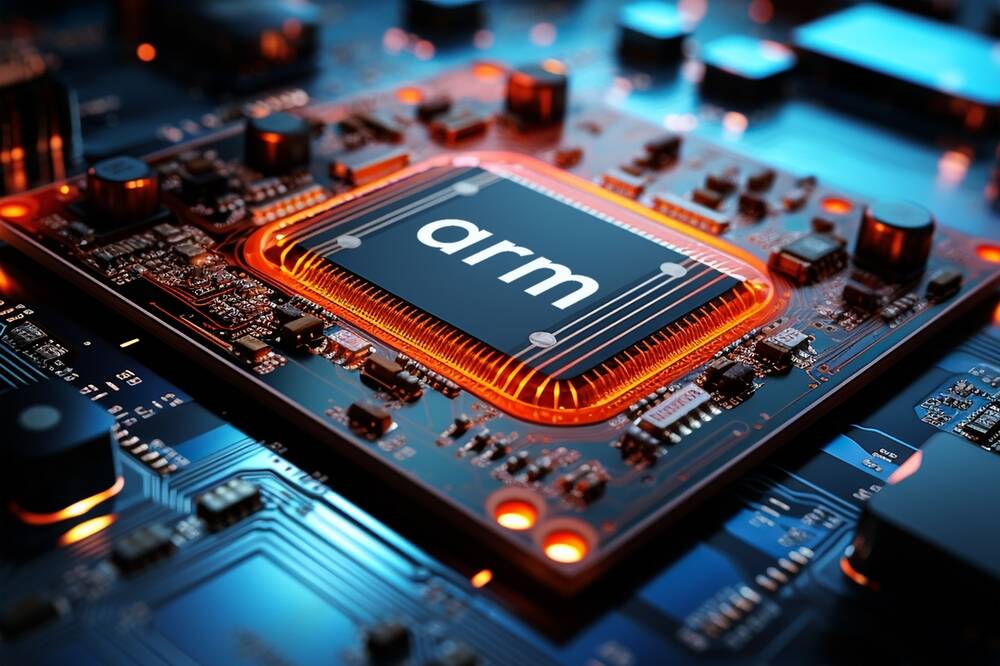Arm's Royalty Revenues Boom, Execs Talk Up Hopes For AI Bonanza

Smartphone chip champ Arm is crowing over expanding royalty revenues, driven by uptake of Armv9 technology, yet execs can't stop talking up AI as its future money spinner.
The chip designer today reported revenue of $844 million for its fiscal Q2 2025, ended September 30, up 5 percent year-on-year, but down on the $939 million it posted in the previous quarter, breaking the company's run of increasing revenue each quarter stretching back for more than a year.
This was expected. CFO Jason Child previously said Q2 would be a low point during the 2025 fiscal year due to timing of licensing revenue recognition, but this wasn't enough to placate the markets, with Arm shares down 5 percent following the news.
For the silicon design biz, royalty revenue was the major highlight. This brought in $514 million, up 23 percent year-on-year, attributed to increasing uptake of the Armv9 architecture in chips used for smartphones, and also adoption of its Compute Subsystem (CSS) chip blueprints.
In fact, Arm boasted that its growth in royalties from smartphones outpaced actual smartphone shipments.
"Smartphone royalties increased approximately 40 percent year over year compared with a mid-single-digit increase in the number of smartphones sold, mainly due to smartphone application processors being increasingly Armv9-based with a higher royalty rate," Child explained.
In contrast, Arm's licensing revenue declined 15 percent to $330 million, although better than Arm's own expectations, which were for a 25 percent drop.
"License revenue varies quarter to quarter due to the normal fluctuations in timing and the size of multiple high-value license agreements and contributions from backlog," Child said.
Looking ahead, Arm appears fixated on the potential AI gold mine for its chip architecture, a topic chief exec Rene Haas frequently returned to during the company's earnings conference call for investors and analysts.
"I think when we look at what's going on with AI and when you think about AI, it's not just training in the datacenter, but it's inference in the datacenter, it's inference across different parts of the overall value chain, the network, the automobile, the PC, the mobile phone, the wearable, which can be kind of what people would call the edge," Haas said.
"What that's driving is, I think, an increase for us that we're seeing across the board for R&D and innovation to capture this platform opportunity. So we're seeing pretty broad licensing demand across, candidly, all the markets and all the sectors," he continued, adding: "It's a very good forward indicator for the strength of the business and also for the strength of the royalties."
- Arm to Qualcomm: See you in court? Oh yes, please
- Arm reportedly warns Qualcomm it will cancel its licenses
- As Arm rivals cook up custom silicon, Mediatek sticks to tried-and-true Cortex recipe
- Microsoft's Arm-based Cobalt 100 CPU now live and powering Azure VMs
Looming over all of this is the pending litigation against chipmaker Qualcomm, one of Arm's biggest licensees, due in court next month. In relation to this, Arm has threatened to cancel those licenses, claiming Qualcomm is in breach of them, which could have a material effect on its own revenue.
"Regarding the revenue, our forecast and guidance has always taken into consideration that we may not prevail in this case, so we have essentially taken that forward look," Haas said.
"Our forecast assumes that we're going to get paid existing ALA [architecture license agreement] royalty rates. So until something changes, there won't be any increase or change in those rates," Child added.
For Q3 of its fiscal 2025, the chip designer forecasts total revenue to rise again to between $920 million and $970 million, which at the midpoint would represent growth of 15 percent year-on-year.
Child said that investment in the next generation of technologies is on track, with operating expenses likely to be around $525 million in the next quarter.
For the full fiscal 2025, Child said that Arm expects revenue to be between $3.8 billion and $4.1 billion, an 18-27 percent year-on-year increase.
"We expect that our revenue growth from smartphones will continue to be driven by Armv9-based chips becoming a greater proportion of the mix, with CSS ramping over the next couple of quarters," he stated.
Arm also believes it will gain share in cloud and automotive. Based on feedback from customers, it expects sequential growth in networking in both Q3 and Q4, while IoT is not expected to recover until next year. ®
From Chip War To Cloud War: The Next Frontier In Global Tech Competition
The global chip war, characterized by intense competition among nations and corporations for supremacy in semiconductor ... Read more
The High Stakes Of Tech Regulation: Security Risks And Market Dynamics
The influence of tech giants in the global economy continues to grow, raising crucial questions about how to balance sec... Read more
The Tyranny Of Instagram Interiors: Why It's Time To Break Free From Algorithm-Driven Aesthetics
Instagram has become a dominant force in shaping interior design trends, offering a seemingly endless stream of inspirat... Read more
The Data Crunch In AI: Strategies For Sustainability
Exploring solutions to the imminent exhaustion of internet data for AI training.As the artificial intelligence (AI) indu... Read more
Google Abandons Four-Year Effort To Remove Cookies From Chrome Browser
After four years of dedicated effort, Google has decided to abandon its plan to remove third-party cookies from its Chro... Read more
LinkedIn Embraces AI And Gamification To Drive User Engagement And Revenue
In an effort to tackle slowing revenue growth and enhance user engagement, LinkedIn is turning to artificial intelligenc... Read more

